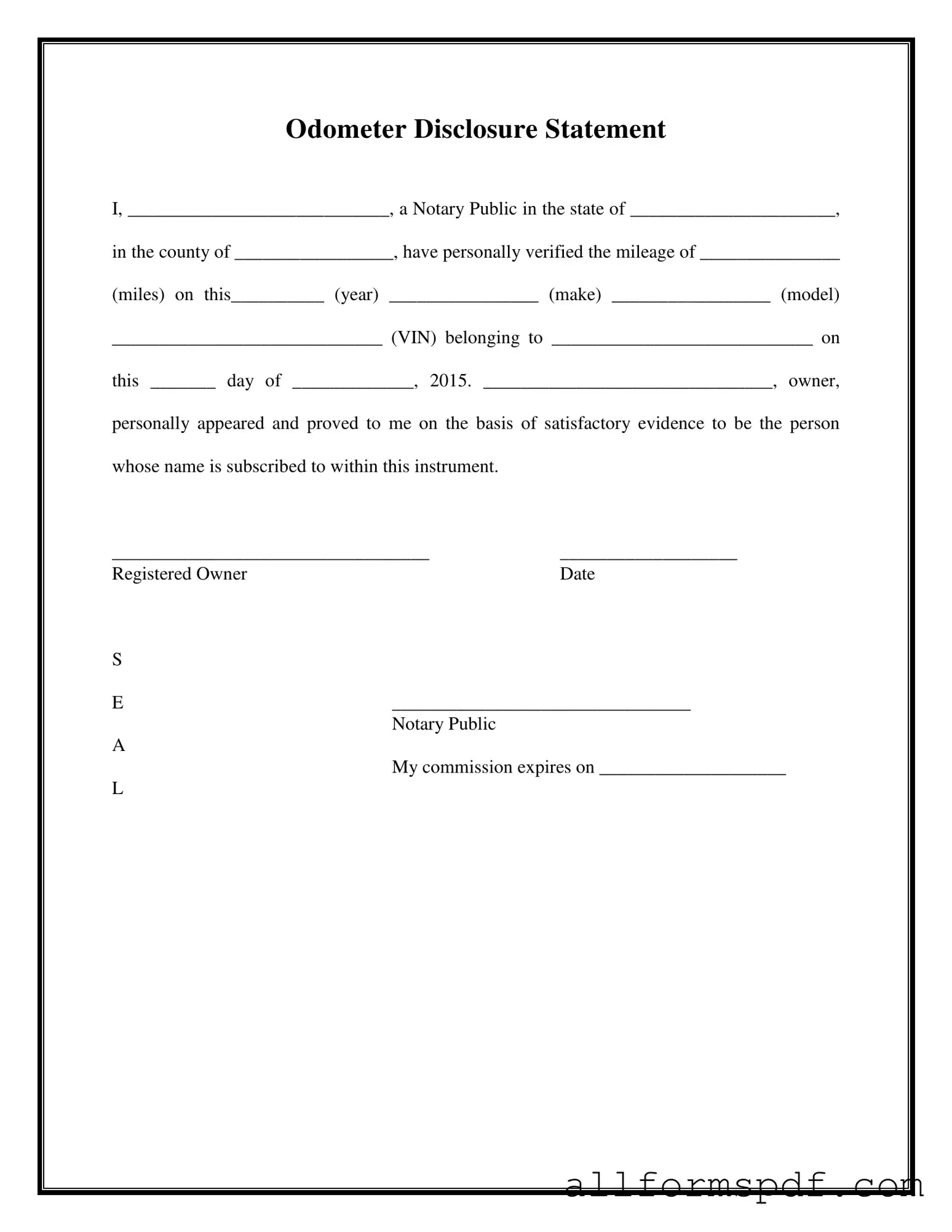Filling out the Notarized Odometer Statement form can seem straightforward, but many people make common mistakes that can lead to delays or complications. One frequent error is leaving out important personal information. For instance, if the name of the owner is missing or incomplete, the form cannot be processed correctly. Always double-check that all required fields are filled in accurately.
Another common mistake is incorrect mileage entry. The form requires the exact mileage of the vehicle at the time of sale. If the mileage is written incorrectly, it could raise questions about the vehicle's history. It's crucial to verify the odometer reading before completing the form.
People often forget to include the vehicle identification number (VIN). This number is unique to each vehicle and serves as a critical identifier. If the VIN is missing or incorrect, it can cause significant issues when transferring ownership.
Additionally, some individuals overlook the date section. The form must be dated correctly, as it indicates when the odometer reading was verified. If the date is missing or incorrect, it could complicate the legal validity of the document.
Notarization is a vital step in this process, yet some people fail to have the form notarized. Without a notary's signature, the document may not be considered valid. It's important to ensure that a notary public is present to witness the signing of the form.
Another mistake involves not providing satisfactory evidence of identity to the notary. Notaries need to verify the identity of the person signing the document. If the owner cannot provide proper identification, the notarization cannot occur.
Some individuals neglect to check for any additional requirements specific to their state. Each state may have different regulations regarding odometer disclosures. Always research and ensure compliance with local laws.
People sometimes forget to sign the form themselves. An unsigned document is not valid. Ensure that all required signatures are present before submitting the form.
Lastly, failing to keep a copy of the completed form can lead to issues in the future. It's wise to retain a copy for personal records. This can serve as proof of the transaction if any disputes arise later.
By being aware of these common mistakes, individuals can ensure that their Notarized Odometer Statement form is filled out correctly, facilitating a smoother vehicle transfer process.
